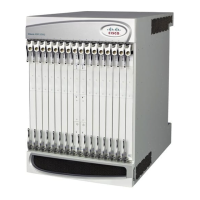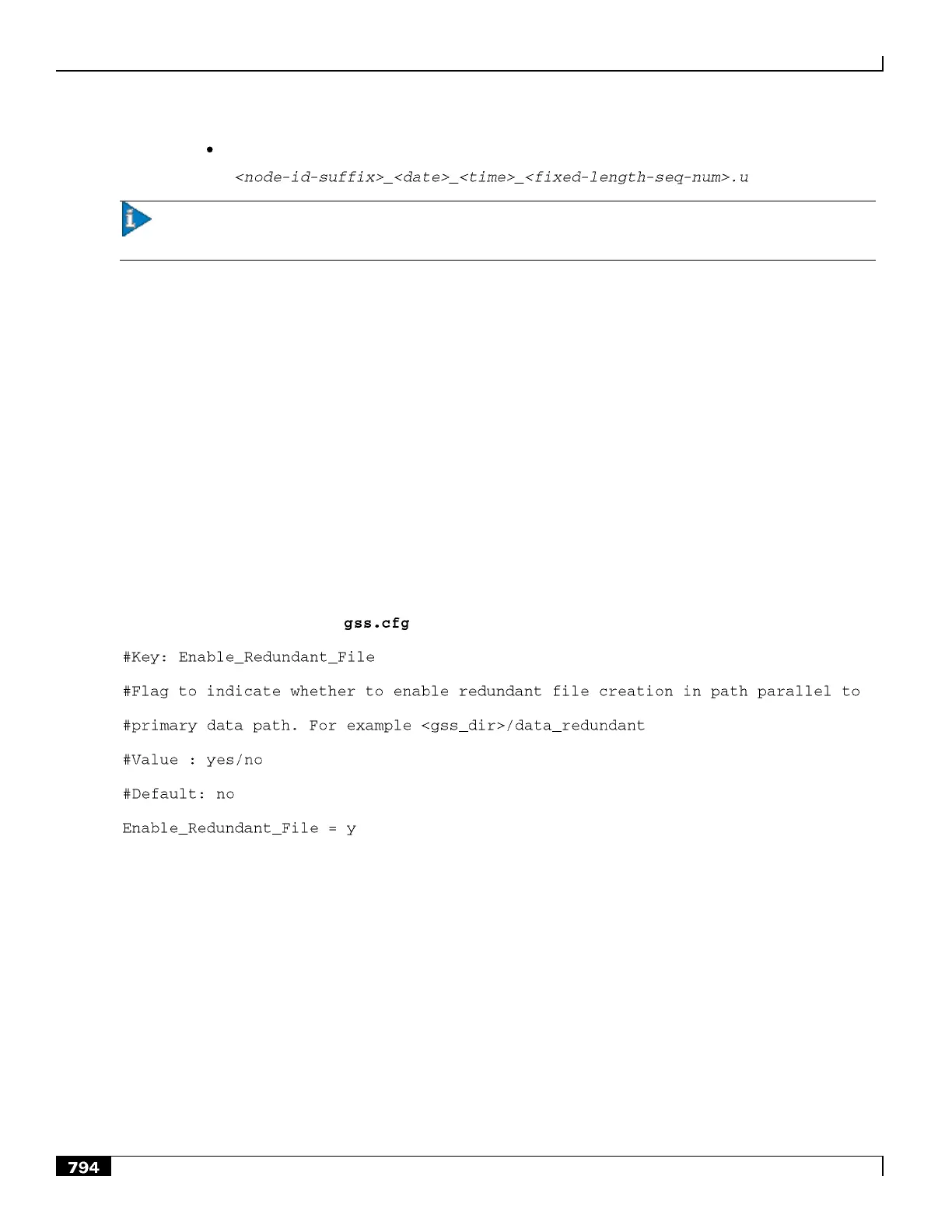GTPP Storage Server Overview
▄ Cisco ASR 5000 Series Product Overview
File name format:
Important: The custom2 to custom8 file formats are customer-specific. For more information on the file formats,
contact your local sales representative.
For more information on CDR accounting attribute elements, refer to the AAA Interface Administration and Reference
Guide.
Redundant Data File Support
The FileGen utility includes an additional feature to generate redundant GSS files. When this feature is enabled, the
FileGen utility automatically creates a directory called /<GSS_install_dir>/data_redundant (name cannot be changed).
After the original data file is created and stored in the /<GSS_install_dir>/data directory, the FileGen utility creates a
hard link between the /<GSS_install_dir>/data_redundant directory and the same tmp file that was used to create the
original data file. Effectively, this creates a copy and stores a hard link duplicate in this redundant directory.
The redundant directory is in the same partition and cannot be moved. Hardlinked means that the redundant files are not
deleted if/when the original files are deleted.
By default, this feature is disabled. It can be enabled during the installation of the GSS application (see the installation
procedure later in this guide) or it can be enabled/disabled at anytime by using a text editor to modify the appropriate
lines in the GSS configuration file ( ):
PSMON
The PSMON is a UNIX process monitor utility that starts when GSS starts and then runs in the background as a fully
functional background daemon, capable of logging to syslog and log file with customizable E-mail notification
facilities.
PSMON monitors the PostgreSQL Database, GSS, and FileGen processes. The PSMON scans the operating system
process table and, using the set of rules defined in the configuration file, respawns any dead processes.

